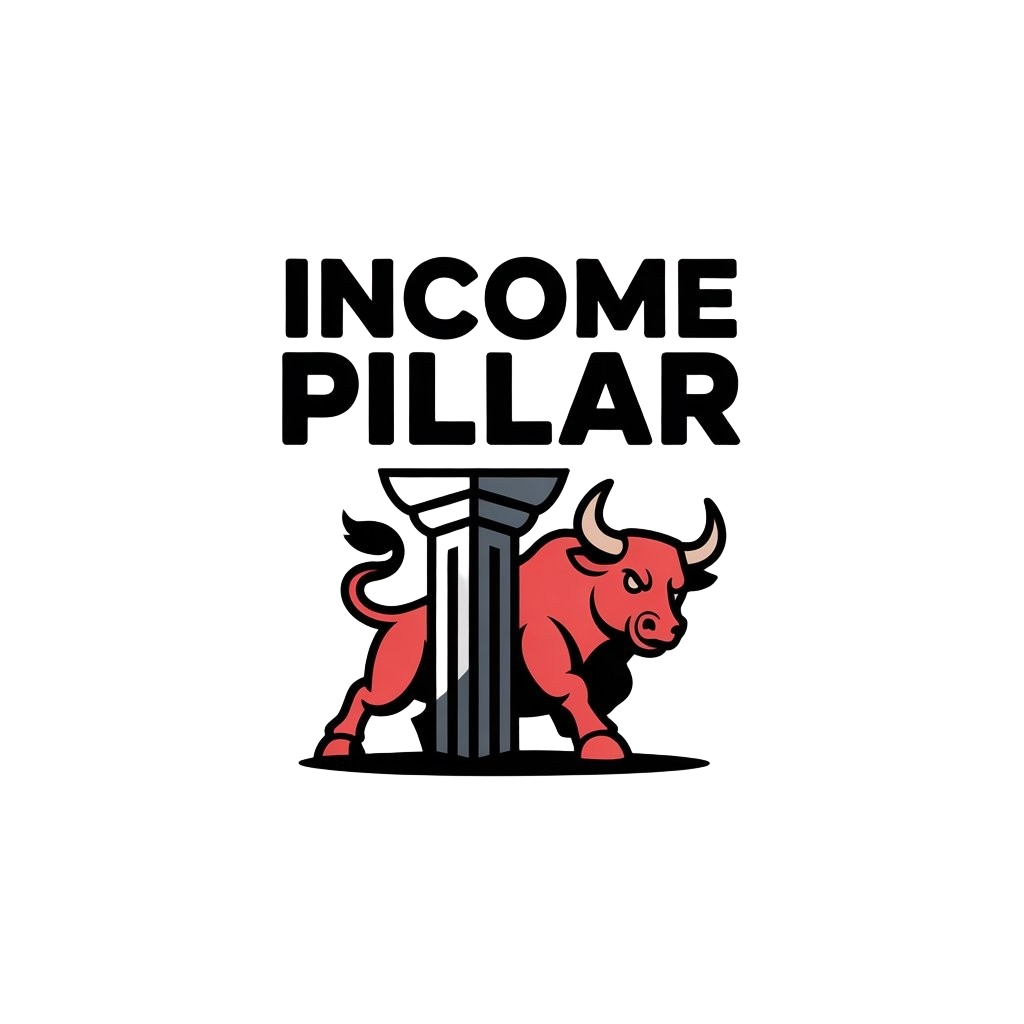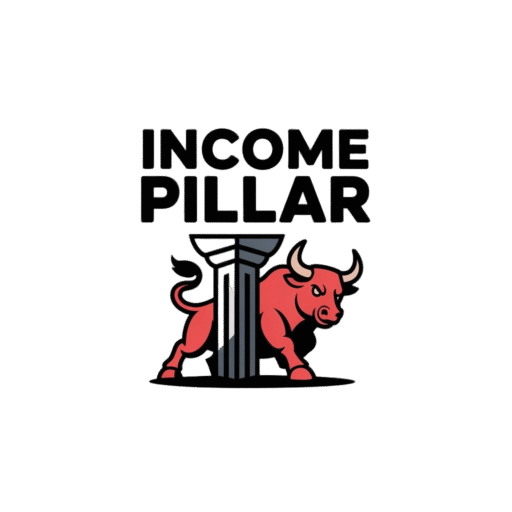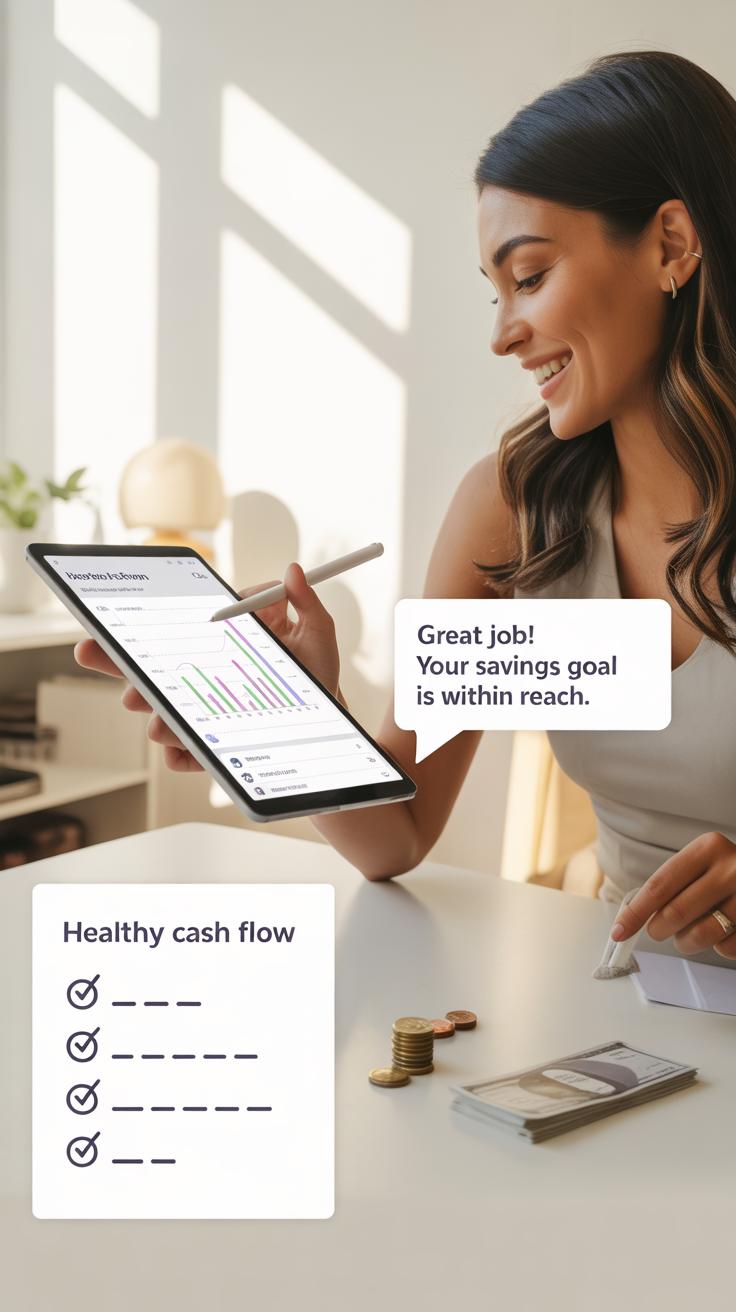Introduction
Cash flow is the movement of money into and out of your business or personal finances. It is a vital sign of your financial health. Knowing how cash moves helps you manage your money wisely by seeing what you earn, what you spend, and how much you have left to use.
This article covers the essential points of cash flow statements. You will learn what they show, why they matter, and how to track your cash flow to make better money decisions. Understanding these basics can help you avoid running out of money and keep your finances on track.
Define cash flow and its types
Cash flow is simply the movement of money going in and out of your hands. Think of it like the flow of water through a faucet—sometimes steady, sometimes stopping for a bit. It tracks how much cash you gain and spend over a certain time. Understanding this helps you see if you have enough money to cover what you need.
There are three main types of cash flow, each showing a different side of your finances:
- Operating activities: This is money coming from your regular day-to-day life. Like your paycheck or money spent on groceries.
- Investing activities: This involves buying or selling things that last a long time or make money later. For example, buying a car or selling old furniture.
- Financing activities: This covers money you borrow or pay back. Taking out a loan or paying off credit card debt fits here.
Knowing these helps you understand where your money really comes from and where it’s going.
Key components of cash flow
Operating cash flow is the one that usually affects your daily life the most. Imagine getting your salary on Fridays and paying for bills or buying lunch during the week. These in-and-out movements keep your budget alive.
Investing cash flow might feel less obvious, but it matters too. Say you sold an old bike and got some cash—that’s money coming in from investing activities. Or you bought new tools for a hobby, which is money going out.
Financing cash flow can be tricky. Getting a personal loan adds cash in, but when you make repayments, cash goes out. Even borrowing from or paying back a friend counts. It’s more about managing your debts and funds outside regular spending.
How cash flow affects your money
When cash flows smoothly, you can manage your budget without stress. But if money goes out faster than it comes in, you might find yourself scrambling to pay bills or missing chances to save.
Think about what happens if you spend your paycheck too quickly: your operating cash flow dips low, limiting what you can actually do day to day. On the other hand, selling an old gadget adds to your investing cash flow, giving you a little breathing room for something unexpected.
Understanding these movements helps you spot when you need to slow down spending, or maybe look for extra income. It’s not always clear-cut — sometimes money comes in one area and goes right out in another. But paying attention to these flows helps you see how available your money really is, beyond just what’s in your bank account.
Why cash flow matters to you
Understanding cash flow helps avoid money shortages
Cash flow isn’t just a business term—it’s about the movement of money in and out of your pocket or accounts. Knowing where your money goes and when it comes in lets you anticipate shortages before they happen. If you’ve ever found yourself scrambling to cover a bill because your paycheck was late, that’s a cash flow problem. Tracking cash flow helps avoid those moments.
Imagine you’re running a freelance gig. You might have a great month earning lots, but if clients pay late, your cash inflows lag behind your outflows. Suddenly, covering rent or supplies feels tight, even if your overall earnings look good on paper. That’s why understanding cash flow can keep your financial life moving without surprises.
Cash flow versus profit
Profit and cash flow might seem the same but they differ in key ways. Profit is what’s left after subtracting expenses from revenue. Cash flow, on the other hand, tracks actual cash entering and leaving on a specific timeline.
For instance, a business could show a profit at year-end because of sales made on credit. Yet, if customers don’t pay those invoices promptly, the company might struggle to pay bills, resulting in negative cash flow. This gap can cause serious issues—a profitable business stuck without cash can’t meet daily expenses.
The role of cash flow in signaling financial health
Cash flow acts like a financial pulse. Steady positive cash flow usually points to strength: enough money to pay bills, invest, and save. Negative or inconsistent cash flow could signal trouble, even if profits look fine.
For personal finances, this means avoiding overdrafts or unexpected loan reliance. For businesses, it affects creditworthiness and survival. Interestingly, strong profits might mask cash flow issues that, if ignored, could lead to crisis. So, paying attention to cash flow reveals the real state of financial health beyond just profit figures.
Steps to create a cash flow statement
Creating a cash flow statement can feel tricky at first, but breaking it down step-by-step helps. Start with listing your cash inflows. Think about all the money coming into your accounts—sales revenue, loan advances, maybe even investment returns if you have them. Don’t forget any smaller sources too, like refunds or reimbursements. Sometimes, these small amounts slip your mind but can add up.
Once you have your inflows, move on to recording cash outflows. This includes everything you spend cash on: bills, rent, office supplies, loan repayments, and any purchases. Try to be as detailed as possible. You might find some irregular expenses, like quarterly taxes or unexpected repairs. Those matter here since they affect your available cash. If you’re using a spreadsheet or app, group these outflows into categories to spot patterns easier.
Looking at inflows and outflows side by side gives you a clearer picture of your actual cash position. Sometimes your income looks good on paper, but outflows can catch you off guard. Have you ever been surprised by how much a few small expenses add up? This process helps avoid that. It’s a bit like putting your money story on paper, even if the story feels a bit messy.
Common cash flow problems to watch
Many people face cash flow challenges without realizing it until things get tight. It’s not always sudden—sometimes, the warning signs creep in slowly, almost unnoticed. For example, you might start juggling bills, paying some late without much fuss, thinking you’ll catch up next month. But those little delays add up.
Typical issues include irregular income streams, unexpected expenses popping up, or overspending during good times without saving for leaner periods. Maybe you’ve experienced a month where your paycheck barely covers essentials, and you dip into credit cards to fill the gap. That’s a classic cash flow squeeze.
Spotting these problems early means watching for patterns, not just one-off events. If your bank balance repeatedly dips close to zero before payday or you find yourself borrowing regularly just to keep up, these are red flags. Sometimes, it’s harder than it seems to admit these signs—there’s a tendency to hope things will fix themselves.
Signs of negative cash flow
Recognizing when money is moving out faster than it comes in isn’t always obvious. Some moments might feel normal—maybe you missed a payment or two. But if this happens often, it could signal deeper trouble. Here are some common warning signs to watch for:
- Missed or late payments on bills and loans, which can affect credit scores.
- Accounts that often run close to empty, leaving you scrambling for funds.
- Frequent reliance on borrowing, whether through credit cards or personal loans.
- Feeling stressed when checking your bank balance, or avoiding it altogether.
- Delays in covering everyday expenses like groceries or fuel.
You might think a single missed payment isn’t a big deal, but when it becomes a habit, it reflects a pattern. Those patterns slowly erode financial stability.
Avoiding cash shortages
Stopping negative cash flow before it snowballs is tough but doable. Small, practical steps can make a difference—sometimes a big one. You don’t need a complicated budget or fancy tools. Here are some things you can try:
- Track your expenses closely for a month or two to see where money goes—it’s eye-opening.
- Create a buffer by setting aside a small amount regularly, even if it’s just a few dollars.
- Prioritize bills that must be paid on time to avoid extra fees and credit damage.
- Consider negotiating due dates to better match your income schedule.
- Cut back on non-essential spending until you’re back on more stable ground.
Fixing gaps isn’t always about finding more money but managing what you have more carefully. Sometimes, simply being honest with yourself about your spending habits can prevent a cash shortage before it starts. You might even realize you’ve been ignoring obvious signs all along.
Using cash flow for better planning
Tracking your cash flow isn’t just about knowing where your money goes; it’s about shaping your spending and saving in a way that actually fits your life. When you keep a close eye on the timing and amounts of money coming in and out, you start recognizing patterns. For example, maybe you notice that certain bills hit right after payday, and that’s when your budget feels tight. Spotting those moments lets you adjust—maybe by delaying some discretionary purchases or shifting savings goals slightly.
Forecasting future cash needs can feel a bit like guesswork, yet it becomes clearer when you break down your expected income and expenses month by month. Try listing regular inflows, like paychecks or freelance gigs, then subtract your fixed expenses—rent, utilities, loan payments—and the irregular ones like annual insurance premiums. This gives you a glimpse of when cash might get tight or when you’ll have extra to set aside.
Using this data, you can make smarter decisions. Say you notice that you often spend a bit more on groceries mid-month—why not plan that into your budget ahead of time? Or maybe that little side hustle you started doesn’t cover extra expenses consistently. By understanding your flow, you avoid the trap of spending based on wishful thinking and stay grounded in the reality of your finances, even if it sometimes feels a bit constraining.
Tools to track your cash flow
Tracking your cash flow might sound tedious, but it doesn’t have to be complicated. You can use simple tools like spreadsheets or turn to apps designed specifically for managing daily or monthly income and expenses. Spreadsheets offer flexibility—you can customize them however you want, which is great if you like control or have unique financial habits. But they take manual work every day, which some find tiring or easy to forget.
On the other hand, digital apps automate much of this process. Many link directly to your bank accounts and credit cards, pulling in data so you don’t have to enter everything yourself. The catch is, apps usually come with preset categories and might not fit your exact needs. Plus, some require subscriptions, which might feel like overkill if your finances are simple.
Choosing the right tool really depends on what you want and need. Do you prefer hands-on tracking that gives you a full picture? Or would you rather have an app do the heavy lifting and remind you about transactions? Some people switch between tools until they find the right fit—that’s okay too.
Consistency matters more than the tool itself. Regularly updating your records, whether daily or weekly, helps catch mistakes and provides an accurate snapshot of your situation. Setting aside just a few minutes after payments or income hits can make a difference. Review your entries as you go to spot surprises early — maybe a missed payment or unexpected charge. This habit might feel obvious, yet many skip it, leading to messy finances that cause stress later on.
Try to make your tracking routine part of your day or week. You don’t need to log every detail immediately, but keeping up prevents an overwhelming backlog. A quick review might even reveal patterns you hadn’t noticed, like how small, regular expenses add up.
Cash flow in small business cases
Small businesses often face cash flow issues in ways that larger companies might never experience directly. Imagine a local bakery that just landed a big order from a nearby café. It needs to buy extra ingredients and pay temporary staff upfront, but the café will only pay in 30 days. The bakery’s current cash on hand isn’t enough to cover these immediate expenses. Suddenly, even though sales are increasing, the bakery struggles to meet its daily bills.
To solve this, the owner might negotiate partial payments upfront or seek a short-term loan. Sometimes, delaying certain expenses or prioritizing payments helps stretch limited funds until the bigger payment arrives. It’s a tricky balancing act, and often a stressful one.
From such situations, a few lessons stand out:
- Cash coming in doesn’t always match cash going out, so timing matters a lot.
- Building a cash buffer—even a small one—can prevent a crisis when unexpected costs show up.
- Open communication with suppliers and customers might create more flexible payment options than you first assume.
Have you ever found yourself caught between growing demand and tight cash? That tension is very common, but it’s manageable when you watch your cash flow closely and stay proactive.
Checklist for healthy cash flow
Keeping a steady cash flow isn’t just about tracking numbers. It’s a constant process, one that requires attention to small details you might overlook otherwise. To keep things on track in your business or personal finances, try this checklist.
Regular monitoring tasks:
- Review bank statements frequently. Maybe weekly or at least monthly—don’t wait for surprises to pop up.
- Update your records after every transaction. It sounds tedious, but catching errors early saves headaches later.
- Forecast your cash flow ahead, even if only for the next month. Guessing is better than ignoring what’s coming.
- Compare your actual cash flow with your forecasts to see if your assumptions hold true or need tweaking.
Preventative cash flow actions:
- Build a small emergency fund. Even a few hundred dollars can make a difference when something unexpected hits.
- Control expenses by reviewing them regularly. Ask yourself which are necessary and which you can trim.
- Send invoices promptly, and follow up when payments lag. It’s easy to procrastinate, but delayed payments affect your cash flow more than you think.
- Consider offering early payment discounts or setting clearer payment terms to encourage timely cash inflows.
Maybe you find some of these obvious, but I still forget updating my records regularly, which once caused a real scramble. What’s your biggest struggle when it comes to maintaining steady cash flow? Getting into a routine is tricky but worth it.
Cash flow vs profit explained
Profit without cash flow risks
Profit and cash flow often get mixed up, but they’re not the same thing. Profit shows how much money your business made after subtracting expenses from revenue. Think of it like your report card, showing whether you’re doing well or not. But just because you have profit on paper doesn’t mean you have cash in your pocket.
Imagine you sold $10,000 worth of products this month, and your costs were $7,000. Your profit would be $3,000. Sounds good, right? But what if your customers haven’t paid you yet? You might have a profit, but not the cash to pay your bills. That’s where the real challenge begins—profit can be an illusion if cash isn’t moving in.
Balancing both for success
Managing both profit and cash flow is like juggling two balls—you need to keep both in the air. You might feel tempted to focus only on profit, since it seems like “the bottom line.” But without positive cash flow, your business or personal finances can get stuck. Bills pile up, missed payments happen, and stress builds.
Here’s why balancing matters:
- You need cash flow to cover day-to-day expenses, even if your profit is healthy on paper.
- Profit helps you measure long-term success and growth potential.
- Good cash flow lets you take advantage of opportunities that profit alone might not reveal.
It makes me think: Are you looking at your accounts from just one angle? Maybe a deeper dive into cash flow could change how you manage your money for the better. It’s not always straightforward, but juggling profit and cash flow carefully keeps things running smoother than focusing on just one. That balance might feel tricky, but it’s the key to steady financial health.
How to improve your cash flow fast
When cash gets tight, you need quick fixes that actually make a difference. First, think about speeding up cash inflows. Maybe your invoicing process isn’t as sharp as it could be—are you sending bills promptly? Are they clear, making it easy for customers to pay on time? Sometimes, a simple reminder goes a long way. You might also find unexpected cash by selling unused equipment or supplies gathering dust. It’s surprising how much liquidity hides in places you barely notice. Ever checked your inventory closely?
On the other side, slowing down cash outflows can stretch your cash longer than you expect. Try negotiating longer payment terms. Sometimes, vendors won’t mind a little delay. I know, it feels awkward asking, but it can help keep your cash on hand. Also, scrutinize expenses—are there subscriptions or services you don’t really need right now? Cutting those out, even temporarily, makes a difference. Maybe hold off on non-urgent purchases. It’s not ideal to delay everything, but in a pinch, you have room to maneuver.
Think about these steps as tools you can adjust quickly. None of them fix everything overnight, but together, they ease that cash pressure sooner than you’d expect.
Conclusions
Monitoring your cash flow is key to keeping your money steady. The cash flow statement gives you a clear snapshot of where your money comes from and where it goes. It helps you spot problems early and plan for future expenses.
By learning to read and manage your cash flow statement, you take control of your money. Use the steps and tips shared here to track your cash flow regularly. This practice can lead to smarter spending, better saving, and stronger financial security for your business or personal life.
























